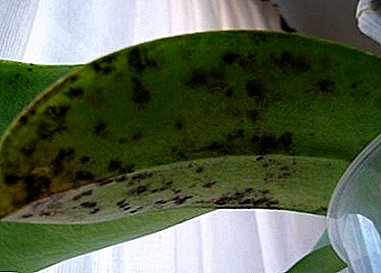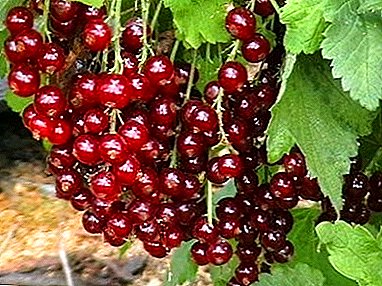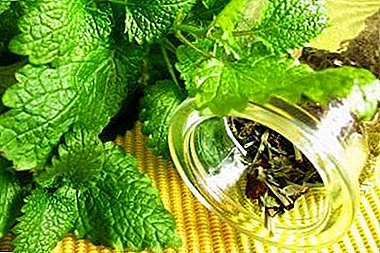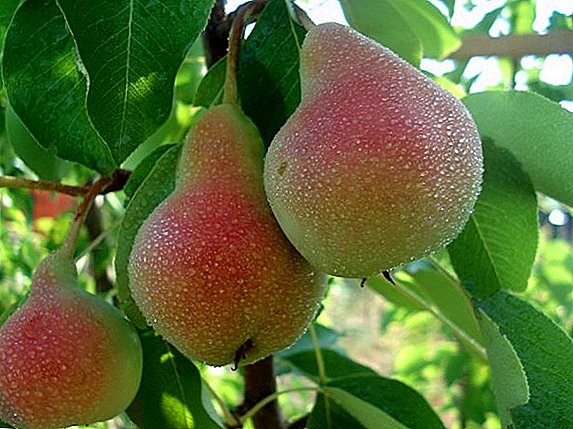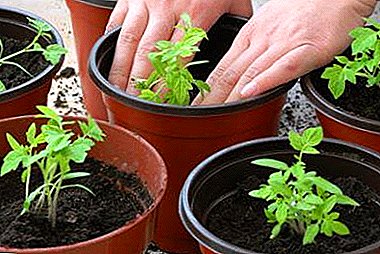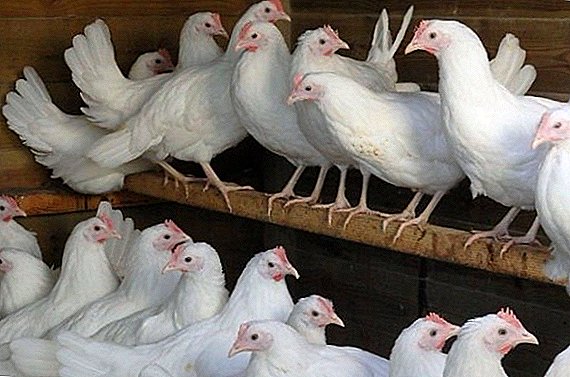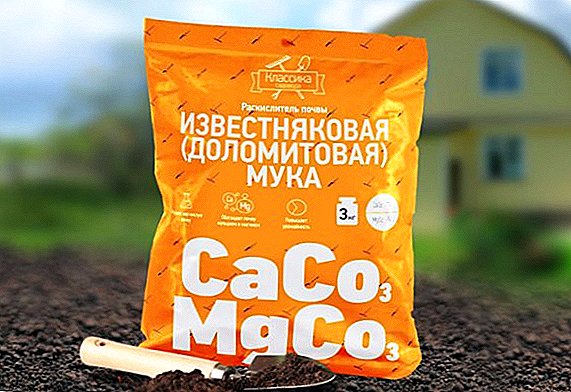 On the existence of limestone flour (dolomite flour) knows almost every plant breeder. The phrase dolomite flour is constantly on hearing at all summer residents and gardeners. However, despite the wide popularity of this substance, few people know how to properly and for what purpose it should be used. Let's look at what dolomite flour is made from and what it is.
On the existence of limestone flour (dolomite flour) knows almost every plant breeder. The phrase dolomite flour is constantly on hearing at all summer residents and gardeners. However, despite the wide popularity of this substance, few people know how to properly and for what purpose it should be used. Let's look at what dolomite flour is made from and what it is.
Dolomitic (limestone) flour: general characteristics
Many novice breeders are concerned about the question of what dolomite flour is and when it should be added to achieve maximum results. Dolomite flour has been used in gardening and plant growing for a very long time. It is a coarse grinding substance obtained as a result of crushing and grinding of carbonate minerals, most of which are dolomites. Dolomite flour has a simple composition, the chemical formula of dolomite is CaMg (CO2). Its main active ingredient is calcium.
The main reason for soil acidification is the displacement of calcium from the soil by hydrogen ions. To improve the quality of the soil and stabilize the pH, the balance of hydrogen and calcium ions is recommended to be maintained artificially using dolomite flour or other means.
Properties of dolomite flour: how useful to use in the garden
 Dolomite flour is most often used in crop production. Due to the fact that its composition contains a large amount of calcium and magnesium, dolomitic limestone flour is used to improve the composition of the soil and its deoxidation.
Dolomite flour is most often used in crop production. Due to the fact that its composition contains a large amount of calcium and magnesium, dolomitic limestone flour is used to improve the composition of the soil and its deoxidation.
However, dolomite flour is used not only to bring the indicators of the soil to the optimum parameters for growing plants, its introduction provides the plant grower with a number of important advantages:
- soil structure improvement;
- saturation of the top layers of soil with easily absorbed forms of nitrogen, potassium and phosphorus;
- promoting the development of beneficial soil bacteria;
- the increase in the soil content of magnesium and calcium;
- the acceleration of the removal of radionuclides from plants;
- improving the absorption of nutrients by plants;
- activation of photosynthesis.
Dolomite flour: how to apply lime fertilizer
To get the maximum result from dolomite flour, you need to know how to apply it correctly. Before using dolomite flour in spring or autumn, you must first measure the acidity of the soil, as the amount of fertilizer depends on this parameter.
Important! When using dolomite flour for soil deoxidation, try to strictly observe the dosage, since its excessive introduction can significantly change the soil parameters and make it unsuitable for growing plants.
 Introduction of dolomite flour will allow you to quickly optimize the main soil biological processes, which has a positive effect on plant development.
Introduction of dolomite flour will allow you to quickly optimize the main soil biological processes, which has a positive effect on plant development. Dolomite flour is actually safe, but in order to achieve maximum results from the application, you should carefully read the instructions for its use.
Introduction of dolomite flour is best done in the fall, but in case of emergency it can also be used in spring and summer.
Did you know? Dolomite flour can be used to spray plants as an effective means to combat insect pests, as it has a destructive effect on their chitinous shell.When making the drug should be as evenly as possible distribute it over the entire surface of the site to a depth of no more than 15 centimeters. If you can not make the drug in the ground, then you can scatter it on the surface of the beds. However, in this case, the effect of its use will become noticeable no earlier than after 12 months.
Dolomite flour is an absolutely safe substance for humans, birds and animals, and therefore even if it is scattered over a pasture, it will not cause any harm to the health of the herd.
Important! Remember: dolomite flour is not recommended to bring into the soil along with ammonium nitrate, urea and superphosphates.
Terms of making dolomite flour
 Limestone flour is used every three or four years, the multiplicity of application depends on the pH of the soil. For example, to improve the characteristics of heavy clay soils, dolomite flour should be applied annually.
Limestone flour is used every three or four years, the multiplicity of application depends on the pH of the soil. For example, to improve the characteristics of heavy clay soils, dolomite flour should be applied annually.
If dolomite flour is used to improve the quality of the soil near the trees, 1 to 2 kilograms of the product is harvested every two years after each harvest. If you are top dressing bushes, then lime powder will need to pour under each plant from 0.5 to 1 kilogram.
In the spring it is recommended to water with a weak solution of dolomite flour such plants as clematis and beets.
Did you know? For plants that prefer acidic soil, such as sorrel or gooseberry, it is not recommended to make dolomite flour, as this will affect the pace of their development and yield.Dolomite flour should also be made before planting greenhouse or indoor plants, after adding it is thoroughly mixed with the substrate. Its introduction has a positive effect on the development of orchids, violets and hyacinths. The systematic introduction of dolomite flour into the soil allows increasing the yield of horticultural crops from 4 to 12 percent.
How to use dolomite flour: consumption rates
 Dolomite flour can be used at any time of the year, it is safe, and besides, it does not interfere with the absorption of other nutrients by plants. However, most often the introduction of funds is carried out in the spring a few weeks before the beginning of the planting of plants in the ground. When using dolomite flour, it is not recommended to apply it simultaneously with other fertilizers, as it does not interact organically with all of their types.
Dolomite flour can be used at any time of the year, it is safe, and besides, it does not interfere with the absorption of other nutrients by plants. However, most often the introduction of funds is carried out in the spring a few weeks before the beginning of the planting of plants in the ground. When using dolomite flour, it is not recommended to apply it simultaneously with other fertilizers, as it does not interact organically with all of their types.
And now let's consider how to properly deoxidize the soil with dolomite flour:
| soil pH | Amount of dolomite flour in grams per 1 m² |
| less than 4.5% | from 500 to 600 g / 1 m² |
| - 5,6% | 450 - 500 g / 1 m² |
| - 5,6% | 350 - 450 g / 1 m² |
| - 7,5% | deoxidation is not carried out |
Other soil deoxidizers: how else can you lick the soil
After harvesting, gardeners put a lot of effort to get good results the next year. Perennial plants require special attention, which delight the plant growers with their fruits for years. A good fertile site with an optimum pH level is a rarity, and therefore timely fertilization and acidification are the key to getting excellent yields every year.
Did you know? Acidic soils are characterized by a high content of salts of heavy metals, such as aluminum or manganese, which reduce the rate of development of most garden crops.With high acidity, the soils are deoxidized using dolomite flour, fluff lime or wood ash.
Push Lime
Pushon lime is a white powder easily dissolving in water. When mixed with water, the breeder gets hydrated lime. This substance is very often used in the production of lime fertilizers and is one of the important components in the manufacture of bleach.
 Lime-pushonka is used in cases when it is necessary to get rid of garden and garden diseases and pests. And now let's consider what is better - dolomite flour or lime.
Lime-pushonka is used in cases when it is necessary to get rid of garden and garden diseases and pests. And now let's consider what is better - dolomite flour or lime.
Lime-pushonka for soil deoxidation will require virtually the same amount as dolomite flour. But the main disadvantage of the lime-fluff is that it can only be used once every 6 or 8 years, as it provokes the occurrence of specific processes in the ground, which can negatively affect its quality. And besides, lime does not have such a positive effect on the soil as dolomite flour.
Wood ash
Many plant growers use wood ash not only as an excellent fertilizer, but also as an excellent soil deoxidizer. It loosens the soil and improves its moisture and breathability. The use of wood ash is advisable on all types of acidic soil:
- sod-podzolic;
- podzolic;
- brown forest;
- light gray forest;
- swamp-podzolic;
- peat bog.
 The amount of wood ash that needs to be added depends on the acidity level of the soil. On average, it ranges from 0.7 to 1.5 kilograms per 1 m². Ash is recommended to bring into the soil during the spring digging. Sometimes plant growers practice the introduction of ash into the wells or planting pits, but this should be done very carefully so as not to burn the roots of the plant.
The amount of wood ash that needs to be added depends on the acidity level of the soil. On average, it ranges from 0.7 to 1.5 kilograms per 1 m². Ash is recommended to bring into the soil during the spring digging. Sometimes plant growers practice the introduction of ash into the wells or planting pits, but this should be done very carefully so as not to burn the roots of the plant.The main drawback of ash is that it will have to be added every year, unlike dolomite flour and lime-fluff. But on the other hand, it contains a much larger amount of nutrients, which allows it to be used as an effective fertilizer.
The advantages of using dolomite flour in the garden
Plant growers note that dolomite flour is an excellent fertilizer, significantly increasing the yield of horticultural crops.
The use of dolomite flour contributes to the reduction of weeds on the site, reduces the likelihood of epidemics of pests and fungal infections. In addition, it is a natural remedy that does not contribute to the accumulation of herbicides and pesticides in plants, which allows for an environmentally friendly crop. Dolomite flour as a fertilizer should be used in the garden in the spring, it increases the plant's own immunity, which allows them to successfully withstand most plant infections and subsequently improves their winter hardiness.
Dolomite flour is an effective and absolutely safe remedy that costs a penny, but brings benefits to a million.



